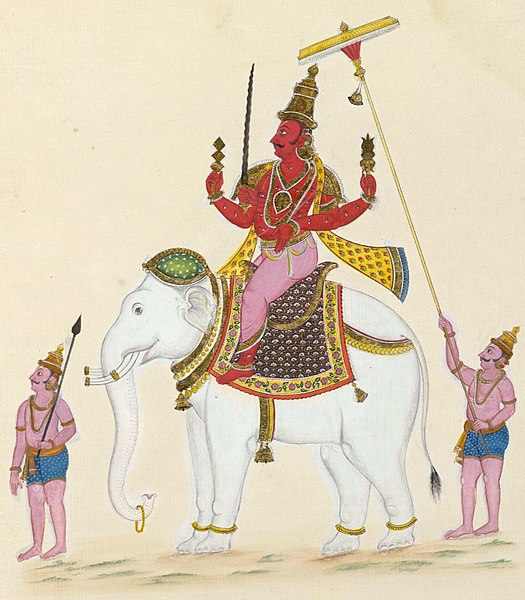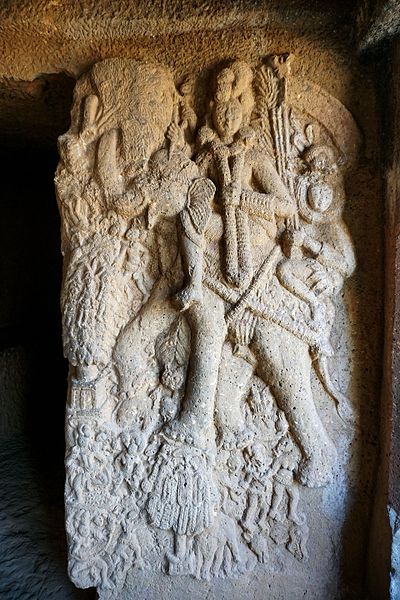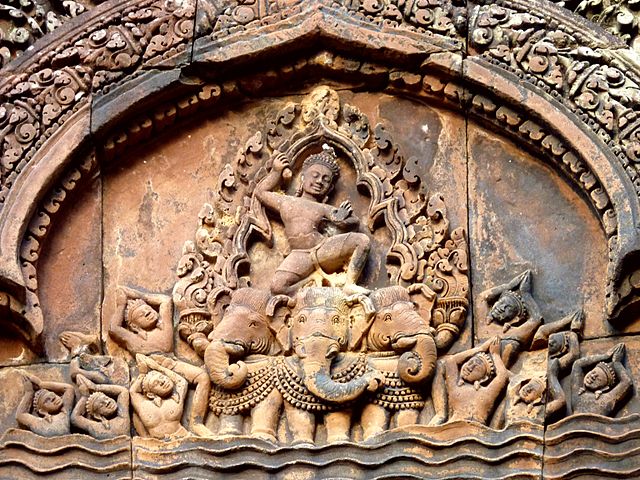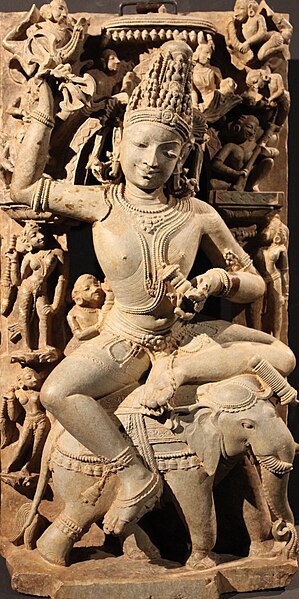Airavata is a divine elephant, characterized by four tusks, seven trunks and a white complexion. He is the "king of elephants" also serves as the main vehicle for the deity Indra. It is also called 'abhra-Matanga', meaning "elephant of the clouds"; 'Naga-malla', meaning "the fighting elephant"; and 'Arkasodara', meaning "brother of the sun". 'Abhramu' is the elephant wife of Airavata. Airavata is also the third son of Iravati. In the Mahabharata he is listed as a great serpent.
Indra (alias Sakra) and Shachi riding the five-headed Divine Elephant Airavata, Folio from a Jain text, Panch Kalyanaka (Five Auspicious Events in the Life of Jina Rishabhanatha), c. 1670–1680, Painting in LACMA museum, originally from Amber, Rajasthan
Detail of the Phra Prang, the central tower of the Wat Arun ("Temple of Dawn") in Bangkok, Thailand, showing Indra on his three-headed elephant Erawan (Airavata).
Erawan statue in Chiang Mai, Thailand.
Indra is the king of the devas and Svarga in Hinduism. He is associated with the sky, lightning, weather, thunder, storms, rains, river flows, and war.
Painting of Indra on his elephant mount, Airavata, c. 1820.
Indra on his elephant, guarding the entrance of the 1st century BCE Buddhist Cave 19 at Bhaja Caves (Maharashtra).
Banteay Srei temple's pediment carvings depict Indra mounted on Airavata, Cambodia, c. 10th century.
Indra is typically featured as a guardian deity on the east side of a Hindu temple.







